
Fred Fitch gave birth to the idea of an interurban electrified railway in North Texas. He wanted to connect Denison and Sherman. In 1899 Fitch asked R H McWilley to survey a route between Denison and Sherman. Fitch and partners purchased College Hills and Park Railway and the City Street Railway Co. of Sherman. Their idea was to compete with the Houston and Texas Central. He would offer more frequent and efficient travel than the HT&C. The population was booming in the Denison-Sherman area and commerce was the catalyst. To insure business and get bodies on Fitch's railway they came up with an attraction between the two cities. Woodlake park was a recreational place for swimming,dancing,boating and family picnics. It was the Six Flags of it's time. Woodlake eventually had a 900 seat theater. The Denison and Sherman Railway remained the same until 1909 when in walks J. F. Strickland who invisioned it's expansion.
J F Strickland at the age of 32 managed the Electric Utility of Waxahachie, Texas. His company later merged with Hilsboro, Cleburne, Dublin,Bonham, and Sherman. He organized the Southwest Electrical Gas Association. In 1905 Strickland,Osce Goodwin,and M B Templeton of Waxahachie wanted to connect the Denison Sherman to Dallas. On September 25,1906 Strickland formed the Texas Traction Company. He conjured up 7 million for the venture. In 1909 J. F. Strickland Company bought controlling stock interest in the Denison Sherman Railway. On April 16th, 1911 the Denison Sherman Railway was sold to the Texas Traction Company. Fred A Jones company of Dallas designed and constructed the line. MIT graduate, Theodore Stebbins was the General Manager of the project. The line used two 1000 kilowatt curtis steam turbine generating units. 300 watt rotary converters supplied 600 dc volts to the trolley wire. The trolley wire was 000 copper wire suspended 19 feet above the rails. Limited service between Sherman and Dallas began October 8,1911. By 1923 the cars were traveling up to a blazing speed of 65 mph. While expanding to the south, the Southern Traction Company was hampered by by light ballasting which limited it's speed to 40 mph.
In 1912 Waxahachie's mule car line, Waxahachie Street Railway Company, was already being converted to electric cars after being purchased by the Southern Traction Company. But the interurbancame to town around the same time so it took most of the people's attention. I believe that a city railway operated separate from the interurban so that you could pretty much go anywhere in town. On the map the city railway branched off the interurban on East Marvin to West University stopping at Sycamore and West Marvin stopping at Ennis st and also traveled down Main street stopping at Grand avenue. Waxahachie's Mayor Prince drove in the last spike in Waxahachie on September 30, 1913 and the "Stock holder Inspection Trip" made the first runs from Hillsboro to Waxahachie and Dallas to Waxahachie. The stockholders left Dallas and Hillsboro at 10:00 am planning to arrive in Waxahachie by 11:30 am. Now, the women of Waxahachie could pack a lunch and spend the day shopping in Dallas and be back in Waxahachie for dinner. In 1913 the automobile still wasn't the norm for travel so you could imagine the efficiency of the traveling on the Interurban.
The merger of Strickland's Texas Traction and Southern Traction created the Texas Electrci Railway. The merger took place on January 31, 1917. J. F. Strickland was elected president. The peak of the interurban patronage was 1920 when they recorded a total of 819,000 passengers. It's decline began in 1930 and the interurban started taking freight to make up for the loss of passenger revenue. But by 1948 the last interurban trip was taken to Waco on the last day of the year. The individualism of the American and his automobile and the development of good roads brought down the interurban. Tale tale signs were noticed by interurban management when they took note of individuals with automobiles stealing their customers at the interurban stations. If the customer was only going a short distance the automobile driver was more efficient but the long trips were better taken on the interurban until the roads got better. When the rods did get better on of the major customers lost by the interurban was the traveling salesmen. They were buying their own cars and hitting the road instead of using the interurban.
NOTE:Now if you noticed Ovilla was left out of the interurban path. Which was another reason for Ovilla's quaintness today besides the fires and the bypass of the railroad. So Ovillians most likely would go to Red Oak or Waxahachie and catch a ride. One incident documented in the Ovilla History Book was that of Bud Cason returning in 1943 from his Pacific service in WWII . As he got off the bus in Dallas he "got on the electric trolley to the little town of Red Oak."
WAXAHACHIE TRESSEL FOR INTERURBAN WAXAHACHIE. OTHER IS REMAINS OF TRESSEL PATH SOUTH OF DOWNTOWN WAXAHACHIE
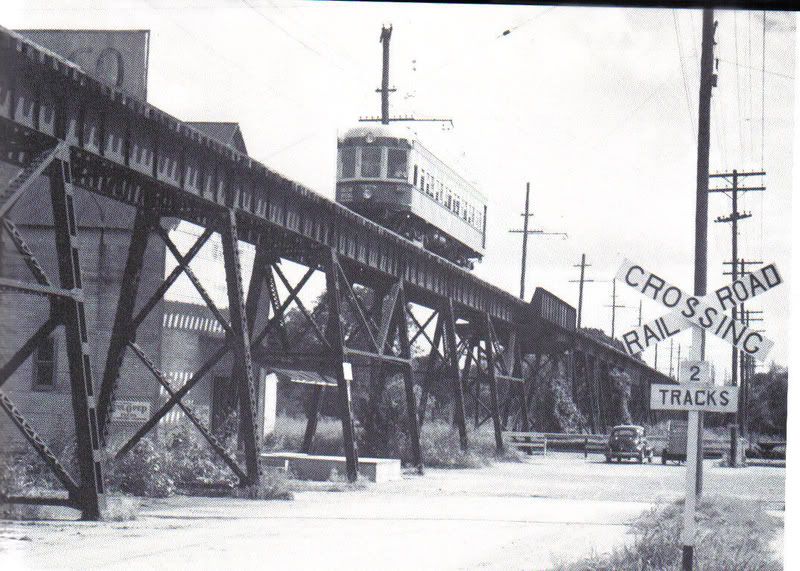
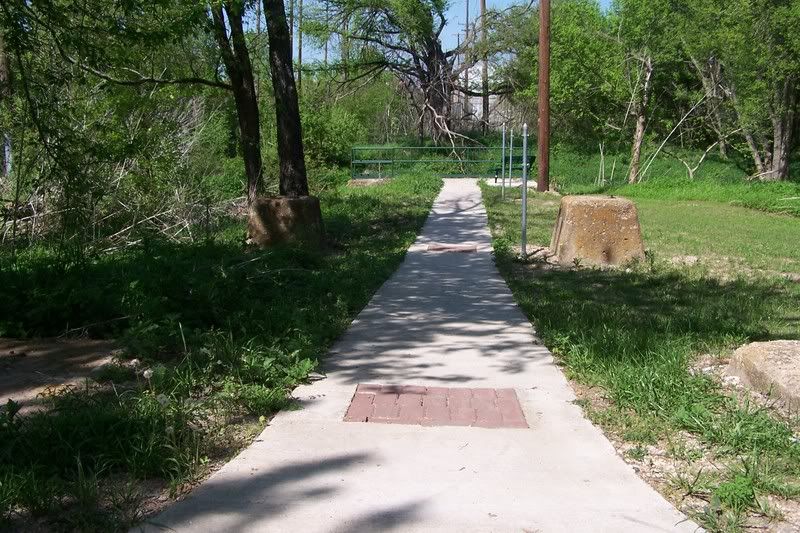
.......................................................................................................................................................
MAIN ST IN ITALY. CLARK STREET TO THE LEFT IS WHERE THE INTERURBAN TRAVELED ON TO MILFORD
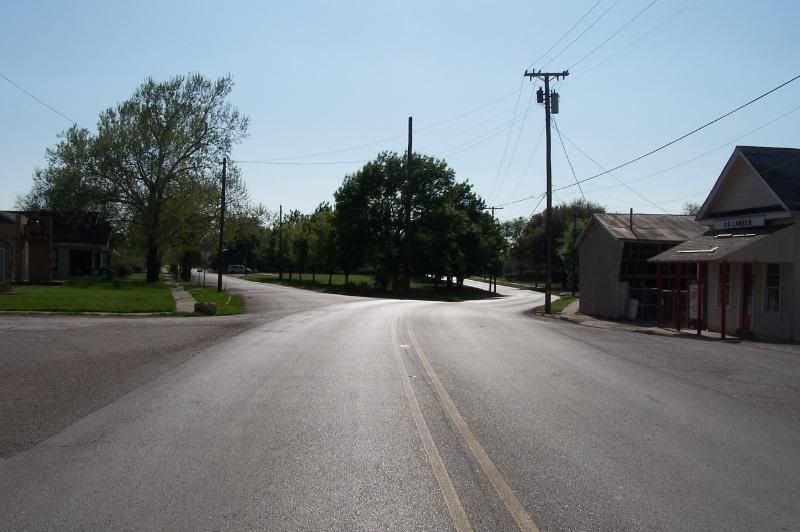
--------------------------------------------------------------------------------------
THIS APPEARS TO BE WHERE THE TER CAME IN FROM THE EAST TO ITALY. NOTICE THE RAISED EARTH AND THAT IT COMES IN AROUND WHERE SAN JACINTO ST. STARTS.


LEFT IS ITALY 2008 AT GARCIA STREET/MAIN ST AND THE RIGHT IS ITALY 1948 INTERURBAN WHERE SAN JACINTO STREET THEN CAME TO THE INTERURBAN STATION


......................................................................................................................................................................
INTERURBAN COURT IN WAXAHACHIE ON COLLEGE ST. WHERE PATRONS WAITED TO RIDE.
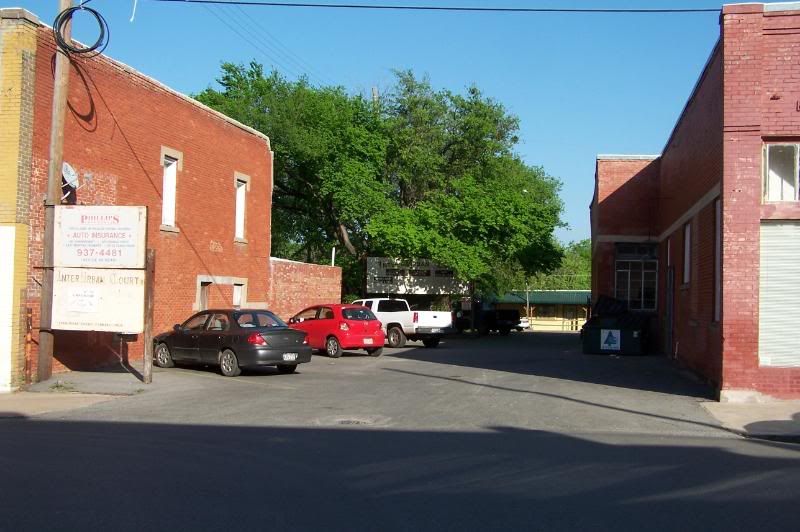
.........................................................................................................
Ennis Interurban Station on Dallas Street and West Baylor where Ennis Black Belt Academy is located


Note: I believe interurban cars could be parked on the back on the West Baylor side
...................................................................................................................................
INTERURBAN FACTS
"The electric interurban industry in Texas totaled nearly 500 miles, the second largest interurban mileage among the states west of the Mississippi River. Most of this mileage was in place by 1913, as the industry grew rapidly during the early 1900s to fill the need for frequent passenger service between urban centers that could not be met by existing steam-railroad service. About 70 percent of the mileage was in the Dallas-Fort Worth area, where electric lines connected Fort Worth and Cleburne, Fort Worth and Dallas, and Denison, Dallas, Corsicana, and Waco. Another 20 percent was in the Houston-Galveston and Beaumont-Port Arthur areas. The rest was scattered around the state. The decline in mileage was also swift, however, as the growth of improved highways and widespread private car ownership combined to siphon off most of the interurban ridership. By the end of 1941 only two lines, the Texas Electric and the Houston North Shore, a subsidiary of the Missouri Pacific, remained; they were both discontinued in 1948."
PLANO HISTORY
----------------------- MAPS OF INTERURBAN IN TOWNS--------------
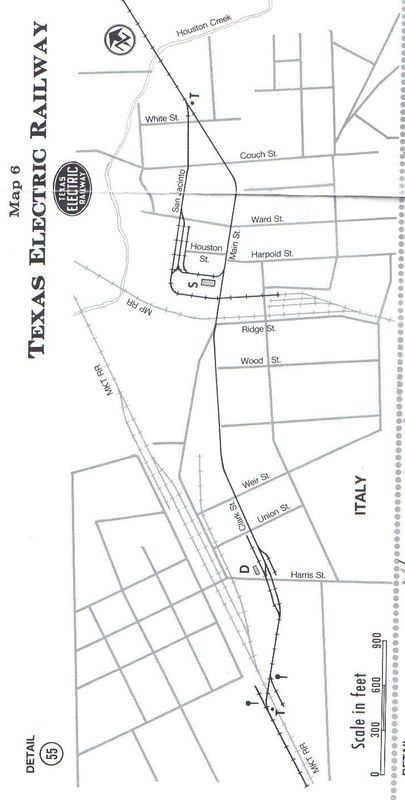
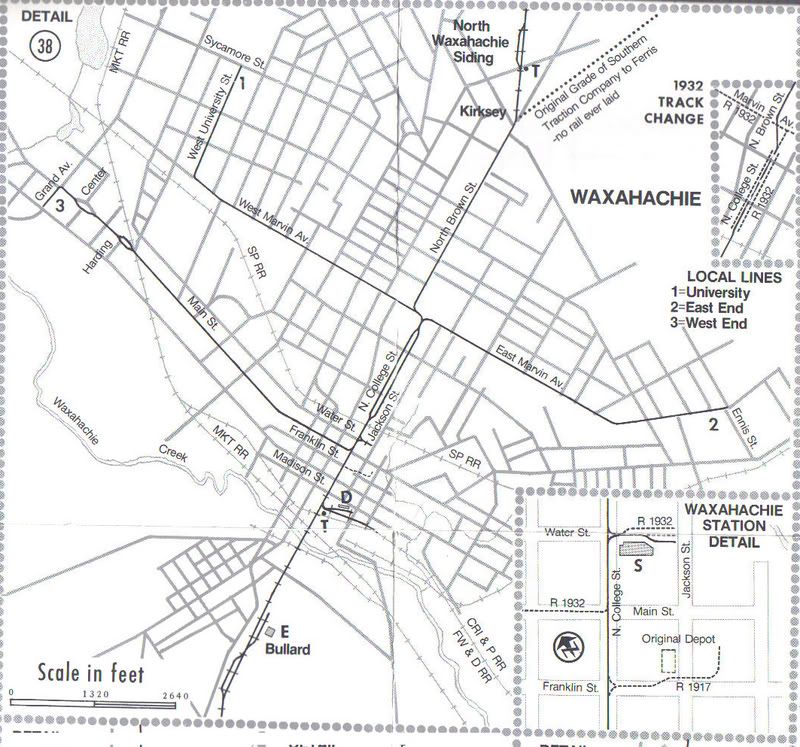

Sources:Ellis County History Overview, Ovilla History Book,Texas Electrci Railway,When cotton Reigned King: Waxahachie





1 comment:
I am looking for an old RR bridge somewhere in Waxahachie, I believe - no longer has the tracks, but does have remnants of the spikes. I can send an image via email with an address... Can you help?
Post a Comment